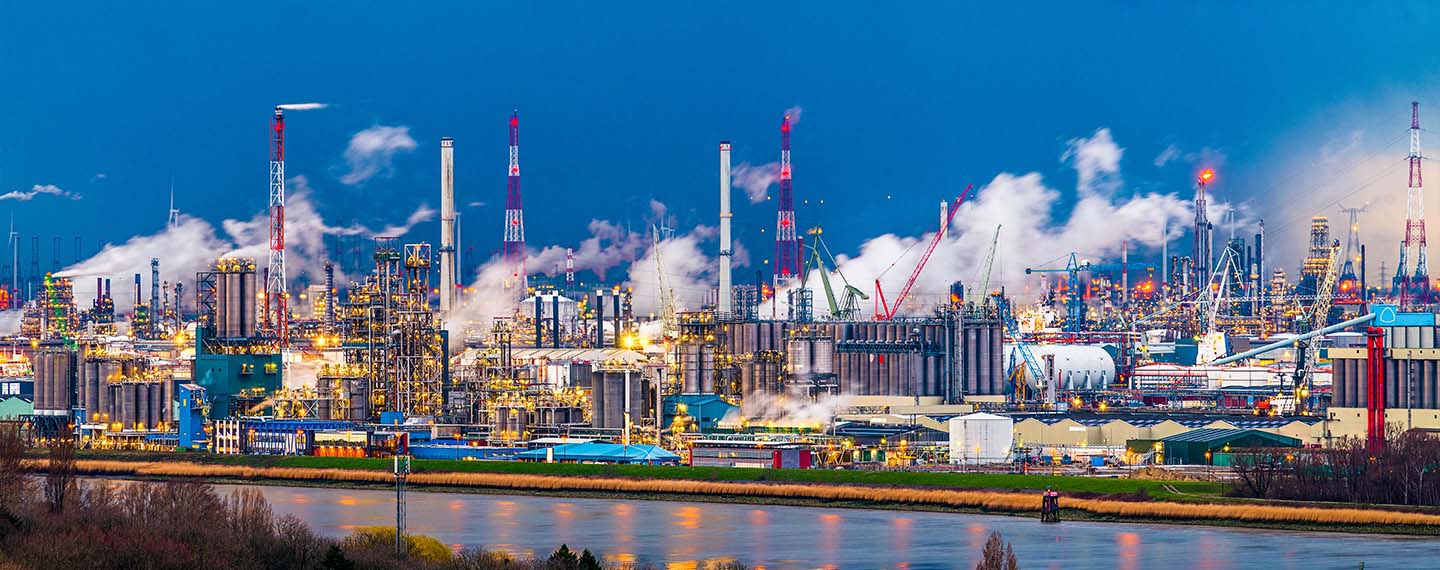European industrial policy: the lessons from NGEU in the new geopolitical framework, ‘more funds are not enough’ – Elcano Royal Institute
European industrial policy: the lessons from NGEU in the new ... Real Instituto Elcano



Introduction
As the Spanish Presidency of the Council of the EU takes off on 1 July, the last full semester before next year’s European elections, the time has come for setting strategic objectives for the Union for 2024-29.
This article underlines the idea that in order to develop a successful European industrial policy in the new geopolitical framework, the experience of NextGenerationEU shows that the increase in European dimension funds has to be accompanied by deep changes in the way they are invested, transforming public-private cooperation with the aim of scaling up European technology. Europe lacks success stories such as those that have made the US lead and exert global industrial technological traction due its large-scale defence and space projects.
If Europe as a whole intends to succeed in its industrial, technological and wealth generation race with China and the US, other targets should be achieved, such as the creation of a Capital Markets Union, a Banking Union and an Energy Union, accompanied by a new financial instrument or sovereign fund, new instruments and policies that should guarantee the efficiency, simplicity, neutrality and soundness the US has achieved with its Inflation Reduction Act (IRA). Europe has created too many administrative and regulatory obstacles for its financial instruments.
The EU must change the way it deals with the rest of world, engaging and reinforcing its foreign agenda with industrial and investment elements that generate clear benefits for its counterparts in an equal and sustainable way while defending the Single Market and avoiding national fragmentation and competition between Member States. The aim is to attract investment projects using national funds or to rescue companies using aid in an asymmetrical manner and contrary to European integration principles.
Trump, COVID-19 and Russia have accelerated a common geopolitical trend: the need for a new common industrial policy in Europe
At the end of a convulsive European legislature, the EU has begun to transform the design and governance of its economic policies by paying greater attention, and resources, to industrial policy in broad terms.
This ‘new’ orientation is due to two main reasons.
- The restrictions and obligations imposed by the global geopolitical transformation that began at least a decade ago and which became evident during the mandate of President Donald Trump in the US and the growing confrontation between China and the US. This confrontation is increasingly oriented towards trade, industry and competition in technological matters as determinant elements of how security is currently understood, and complementary to the classic meaning of security –hard force–.
- The acceleration of this trend caused by the global COVID-19 pandemic, which highlighted the risks and consequences of industrial and technological vulnerability that were then revealed and that the subsequent supply crisis, the so-called bottlenecks, exacerbated. This process became still clearer with the invasion of Ukraine, that extended vulnerability to the energy sector, highlighting the risk that Russian dependence had generated in Europe. Taking advantage of the investment instruments created to deal with the pandemic, mainly NextGenerationEU, this led to an acceleration of Europe’s energy transition.
The IRA awakens Europe
In this context, other significant events have occurred, such as the approval by the Biden Administration of the IRA in August 2022, and later, the speech by Jake Sullivan, National Security Adviser to President Biden, on the renewal of US economic leadership in April 2023 at the Brookings Institute.
Regarding the IRA, a bill approved by the US Congress already six months before, Europe waited until the beginning of 2023 to open the debate about what its response to inflation should be or, even, if there should be one. The debate symptomatically took time to activate, showing Europe’s disorientation on the issue because it was not about responding or reacting, much less emulating the measures promoted by President Biden, but about definitively facing the causes of Europe’s industrial, energetic, productive and technological weaknesses, which are prior to COVID, the invasion of Ukraine and the IRA itself.
The best analysis available to date is, as usual, Bruegel’s. In its paper, Bruegel first dissects the IRA: trade-distorting measures contrary to the WTO; an amount of aid no greater than Europe’s –although the latter continue to be higher for renewable energies–; its technologically neutral character but that is discriminatory by origin of production and raw materials used; and its greater focus on the deployment of renewables than on innovation, which will allow the US to reduce its carbon emissions by 40% by 2030 compared with 2005.
On a global scale, the IRA will accelerate decarbonisation; it will distort supply and distribution chains; will divert resources –industrial, capital and minerals– to the US in the short term, but with positive spill effects over medium-term knowledge about the rest of the world; will reduce vehicle exports to the US; and will have hard-to-foresee consequences on the prices of solar panels, wind turbines and energy in general.
Likewise, for Europe, and from a broader perspective, the international context is not the most appropriate to try to make progress in terms of trade, investment and growth in accordance with the schemes in force until recently. The as yet unfinished debate on European Strategic Autonomy, or on Open Strategic Autonomy, is the best example of this lack of full definition.
It is clear that from a European perspective the never-abandoned goal of achieving major international trade advances and breakthroughs collides with a reality marked by deglobalisation, fragmentation and protectionist tendencies.
Industry is the new key for national security
Jake Sullivan’s recent speech, cited above, has made the new paradigm clear: national security dictates economic strategy, affecting economic, industrial and commercial policies, something unthinkable a very short time ago. His references to a ‘foreign policy for the middle class (invest in workers)’ or the explicit desire to promote the delay of China’s technological development with instruments for that purpose, such as the IRA, and new measures aimed at promoting ‘strategic and green protectionism’, define an unprecedented and complicated panorama for the traditional multilateralism and European regulatory drive.
This discourse defines with unprecedented clarity the role of industry today in the new framework of geopolitical competition that directly involves security and the economy. In this context, the fight against climate change and energy transition, the will to reduce
SDGs, Targets, and Indicators
SDGs Addressed or Connected to the Issues Highlighted in the Article:
- SDG 9: Industry, Innovation, and Infrastructure
- SDG 7: Affordable and Clean Energy
- SDG 13: Climate Action
- SDG 8: Decent Work and Economic Growth
- SDG 10: Reduced Inequalities
- SDG 16: Peace, Justice, and Strong Institutions
Specific Targets Under Those SDGs Based on the Article’s Content:
- Target 9.2: Promote inclusive and sustainable industrialization and, by 2030, significantly raise industry’s share of employment and gross domestic product (GDP) in line with national circumstances
- Target 7.2: Increase substantially the share of renewable energy in the global energy mix by 2030
- Target 13.2: Integrate climate change measures into national policies, strategies, and planning
- Target 8.1: Sustain per capita economic growth in accordance with national circumstances and, in particular, at least 7% GDP growth per annum in the least developed countries
- Target 10.2: By 2030, empower and promote the social, economic, and political inclusion of all, irrespective of age, sex, disability, race, ethnicity, origin, religion or economic or other status
- Target 16.3: Promote the rule of law at the national and international levels and ensure equal access to justice for all
Indicators Mentioned or Implied in the Article:
- Indicator 9.2.1: Manufacturing value added as a proportion of GDP and per capita
- Indicator 7.2.1: Renewable energy share in the total final energy consumption
- Indicator 13.2.1: Number of countries that have integrated climate change measures into national policies, strategies, and planning
- Indicator 8.1.1: Annual growth rate of real GDP per capita
- Indicator 10.2.1: Proportion of people living below 50% of median income, by age, sex, and persons with disabilities
- Indicator 16.3.1: Proportion of victims of violence in the previous 12 months who reported their victimization to competent authorities or other officially recognized mechanisms
Table: SDGs, Targets, and Indicators
| SDGs | Targets | Indicators |
|---|---|---|
| SDG 9: Industry, Innovation, and Infrastructure | Target 9.2: Promote inclusive and sustainable industrialization and, by 2030, significantly raise industry’s share of employment and gross domestic product (GDP) in line with national circumstances | Indicator 9.2.1: Manufacturing value added as a proportion of GDP and per capita |
| SDG 7: Affordable and Clean Energy | Target 7.2: Increase substantially the share of renewable energy in the global energy mix by 2030 | Indicator 7.2.1: Renewable energy share in the total final energy consumption |
| Target 7.3: Double the global rate of improvement in energy efficiency by 2030 | Indicator not mentioned in the article | |
| SDG 13: Climate Action | Target 13.2: Integrate climate change measures into national policies, strategies, and planning | Indicator 13.2.1: Number of countries that have integrated climate change measures into national policies, strategies, and planning |
| SDG 8: Decent Work and Economic Growth | Target 8.1: Sustain per capita economic growth in accordance with national circumstances and, in particular, at least 7% GDP growth per annum in the least developed countries | Indicator 8.1.1: Annual growth rate of real GDP per capita |
| SDG 10: Reduced Inequalities | Target 10.2: By 2030, empower and promote the social, economic, and political inclusion of all, irrespective of age, sex, disability, race, ethnicity, origin, religion or economic or other status | Indicator 10.2.1: Proportion of people living below 50% of median income, by age, sex, and persons with disabilities |
| SDG 16: Peace, Justice, and Strong Institutions | Target 16.3: Promote the rule of law at the national and international levels and ensure equal access to justice for all | Indicator 16.3.1: Proportion of victims of violence in the previous 12 months who reported their victimization to competent authorities or other officially recognized mechanisms |
Behold! This splendid article springs forth from the wellspring of knowledge, shaped by a wondrous proprietary AI technology that delved into a vast ocean of data, illuminating the path towards the Sustainable Development Goals. Remember that all rights are reserved by SDG Investors LLC, empowering us to champion progress together.
Source: realinstitutoelcano.org

Join us, as fellow seekers of change, on a transformative journey at https://sdgtalks.ai/welcome, where you can become a member and actively contribute to shaping a brighter future.







